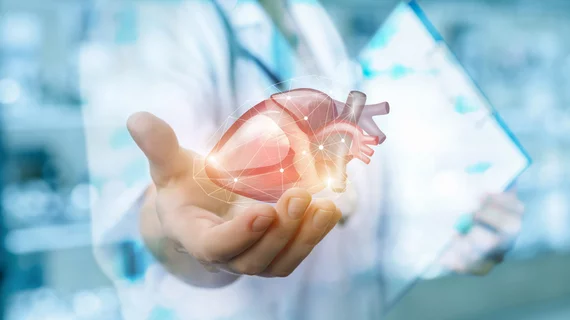'A powerful modality': Handheld ultrasound devices provide important value, meta-analysis confirms
Handheld cardiac ultrasound devices (HUDs) are effective tools for predicting left ventricular (LV) size and function, according to results of a meta-analysis published in Heart.
Using data from the MEDLINE and EMBASE databases, researchers examined 33 different studies covering a total of 6,062 patients. Fifty-four percent of patients were men, and the mean patient age was 65 years old.
According to the authors, the detection of cardiac abnormalities was improved when the testing was performed by experienced echocardiographers. Furthermore, it is advisable that images that are attained by inexperienced operators should be done under the supervision of a more experienced personnel.
For example, there was a significant difference observed in the diagnostic accuracy between experienced and inexperienced users in LV dilatation, LV ejection fraction (LVEF) (moderate/severe) and wall motion abnormality (WMA), according to the authors.
In the analysis, experienced operators were able to determine reduced LVEF, LV dilatation, WMA and LVH with pooled sensitivities of 88%, 89%, 85% and 85%, respectively. For less experienced operators, those numbers were 83%, 68, 78% and 80%, respectively.
Pooled specificities of HUD by experienced users versus inexperienced users for reduced LVFF, LV dilation, WMA and LV dilatation and hypertrophy were 96%, vs. 89%, 98% vs. 95%, 95% vs. 88% and 91% vs. 87%.
"This meta-analysis is the first to establish HUDs as a powerful modality for predicting LV size and function," wrote first author Sam Jenkins, with the department of infection, immunity and cardiovascular disease at the University of Sheffield in the U.K., and colleagues. "Experienced operators are able to accurately diagnose cardiac disease using HUD. A cautious, supervised approach should be implemented when imaging is performed by inexperienced users."
The authors also emphasized that these findings provide "a strong rationale for considering HUD as an auxiliary tool to the physical examination in secondary care, to aid the clinical decision making when considering referral for transthoracic echocardiography."
Read the full study here.
